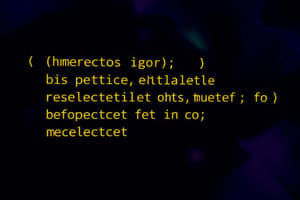Podcast
Questions and Answers
What is the purpose of functions in JavaScript?
What is the purpose of functions in JavaScript?
- To style web pages
- To prevent redundancy in code by using reusable code blocks (correct)
- To create variables
- To define classes
JavaScript function declarations are hoisted to the global scope.
JavaScript function declarations are hoisted to the global scope.
True (A)
What keyword is used to return the operand on the right and terminate a function in JavaScript?
What keyword is used to return the operand on the right and terminate a function in JavaScript?
return
Function expressions are not hoisted to the top of the global scope and are only available for use after they have been ________ in code.
Function expressions are not hoisted to the top of the global scope and are only available for use after they have been ________ in code.
Match the following JavaScript concepts with their descriptions:
Match the following JavaScript concepts with their descriptions:
Flashcards are hidden until you start studying
Study Notes
Functions Intro
- Functions are reusable code blocks that encapsulate multiple statements, expressions, and logics into a single unit.
- They prevent redundancy in code and can be used to create mini programs inside a larger program.
- Functions are classified as objects in JavaScript and can be made to run in the context of other functions or objects.
Function Declaration
- Function declaration is a syntax that uses the keyword
functionfollowed by the function name and the code block inside curly braces. - Syntax:
function functionName(parameters) { code block } - Data passed into a function is called arguments and can accept all data types, including primitive and non-primitive data types, as well as other functions known as callback functions.
- Code block is denoted by curly braces and contains the logic of the function.
- Function declaration in JavaScript is hoisted to the global scope, which means it can be used before it is declared.
Function Expression
- Function expressions are similar to function declarations but are assigned to a variable.
- A function without a name is called an anonymous function.
- The major difference between function expressions and function declarations is that function expressions are not hoisted to the top of the global scope.
- Function expressions can be used to assign default values to parameters using the nullish coalescing operator.
This Keyword
- The
thiskeyword refers to the object that the function is a property of. - In a web browser, the
thiskeyword points to the global window object outside a function. - Inside a function, the
thiskeyword may point to the global scope ifuse strictis not used. - If the
thiskeyword is used in an object, it points to the object that the function is a property of and allows us to access the object's properties, methods, and values.
Function Call and Bind Methods
- The
callmethod can be used to invoke a function with an owner object as an argument. - The
bindmethod creates a new function that, when called, has itsthiskeyword set to the provided value. - The difference between
callandbindis thatcallinvokes the function immediately, whilebindreturns a new function that can be invoked later for reusability.
Arrow Functions
- Arrow functions are anonymous functions that can be assigned to constants and variables.
- Arrow functions can be written both declaratively and as expressions.
- Arrow functions let you return an expression without using the
returnkeyword or curly braces. - Arrow functions do not create a context of their own and instead inherit the context of the parent function.
Constructor Functions
- Constructor functions are used to create multiple instances of an object with the same properties and methods.
- Constructor functions are similar to regular functions but are named with a capital letter to distinguish them from regular functions.
- To instantiate a new object, we use the
newkeyword followed by the constructor function and assign it to a variable with values defined as set during creation time. - Constructor functions will never be used as regular functions by simply invoking them.
Default Parameters Values
- Default parameters are used to assign a default value to a parameter if no argument is passed to the function.
- Parameters defined earlier to default parameters can be available for default parameters.
- Default parameters can be used to avoid undefined values in code and provide alternate values if arguments are missing.
- The traditional way to solve this problem is to implement a series of checks in the function's body and provide alternate values if arguments are missing.
Studying That Suits You
Use AI to generate personalized quizzes and flashcards to suit your learning preferences.




